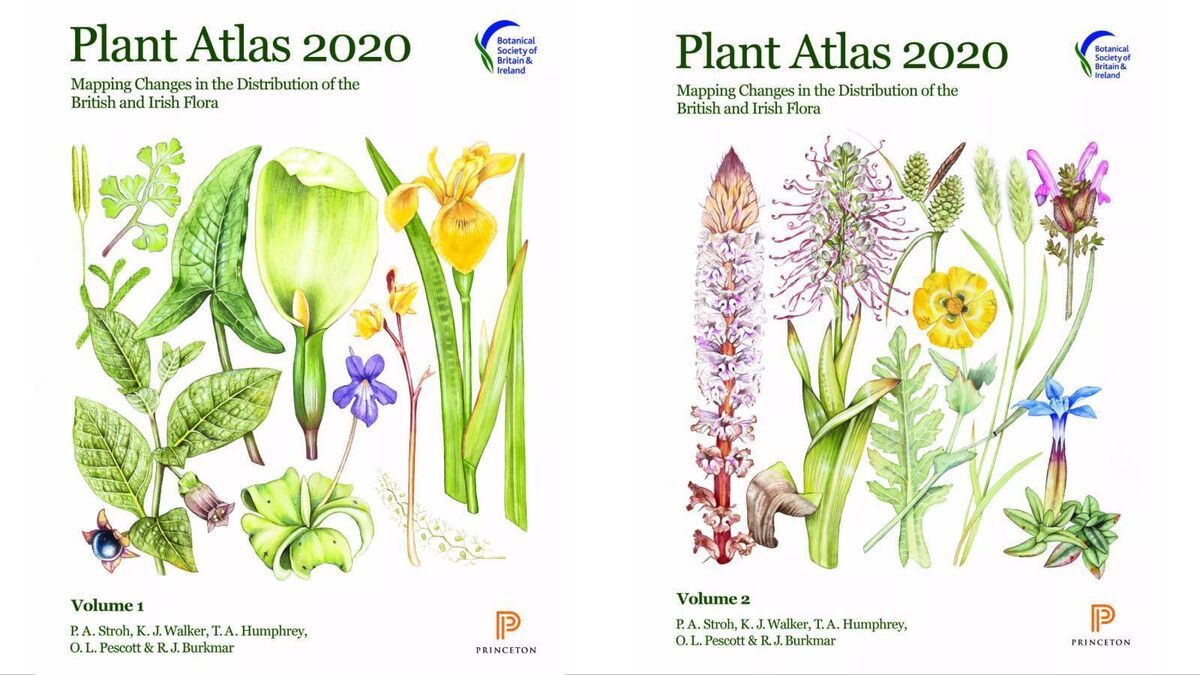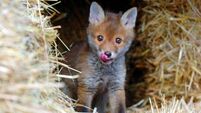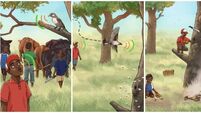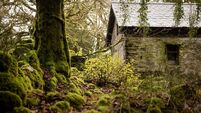Biodiversity or biomonotony: we know what needs to be done, now we just need to do it
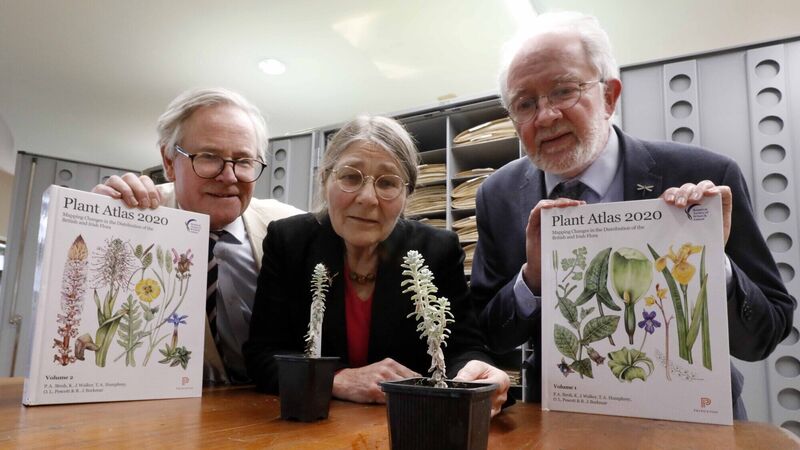
At the official launch of the Botanical Society of Britain and Ireland’s (BSBI) ‘Plant Atlas 2020’ at the National Botanic Gardens, Dublin are President of the Botanical Society of Britain and Ireland, Micheline Sheehy Skeffington; Minister of State for Heritage and Electoral Reform, Malcolm Noonan TD (right) and Matthew Jebb, director of the National Botanic Gardens. They are looking at Cottonweed Achillea maritima which is down to 11 total plants in Ireland from thousands in 20 years due to coastal erosion. Picture: Mark Stedman
Wild plants grow everywhere, each species endowed with adaptations to thrive in a particular set of conditions. Some plants have evolved to cope with acidic soils, like the sundews and sphagnum mosses that thrive in peat bogs. Others are better suited to alkaline conditions, such as the stunning ‘grass of Parnassus’ — not a grass at all but a delicate wildflower that is specially adapted to grow in wet, chalky terrain, such as the wild shores of calcium-rich lakes. Pioneering marram grass and prickly ‘sea holly’ are two of only a handful of species that can cope with the lack of water and permanent saltiness of sandy shorelines. Completely different conditions prevail in a deciduous woodland, where shade is a limiting factor, so woodland wildflowers emerge in early spring from underground bulbs, giving them a head-start before the canopy overhead shades them out.
Each of the 3,800 or so plant species in Ireland has a unique set of adaptations and preferences, honed over time to fill every available niche. The diversity of plants in any given habitat is also the factor that often enables the whole ecosystems to thrive, as many plants stabilise soil for each other, their root systems growing to differing depths, or providing shelter for each other — some being hardy and others less so. Plants create the conditions that they need to thrive, and having allies in this task is what makes an ecosystem resilient. Moving up the food chain, a diversity of plants provides for a diversity of pollinators and other insect dependants. Each species of bee, moth, butterfly and hoverfly also has its own suite of adaptations and preferences when it comes to feeding on the stems, leaves, flowers, and pollen grains of their particular food plants. The assemblage of wild plants and their impressive physiological adaptations are the basis of everything.
#BSBIAtlas2020 is now live, so check out this fabulous website: https://t.co/ZNf5ZYBpHo
— BSBI: Botanical Society of Britain & Ireland (@BSBIbotany) March 8, 2023
Find out which of these species👇 is doing well & which is declining - and why.
Read about the #PlantAtlas project & download summary reports about our changing flora: https://t.co/1K7IKvGjB3 pic.twitter.com/aUgvRJAiY2
Plants are the link between the sun's energy and the chemical energy that feeds all life. They are literally the source of all life on earth. And apart from being the basis of every wild food chain, and the oxygen that we breathe, wild plants created the soils upon which our agricultural systems depend. They break down inorganic substrates with their roots; draw up minerals from beneath; enhance soil structure and moisture levels; and deposit leaves at the end of the growing season that enrich the soil.
But now, we have gotten so good at controlling which plants grow where, that diversity is diminishing at an alarming rate. The level of selective control, otherwise known as habitat loss, is now the leading loss of biodiversity decline.
Since the 1950s we have drained away wetlands and supplanted them with fields of cultivated crops; replaced species-rich farmland hedges with wire fences; and eviscerated meadows and grassy pasture of their rich floristic mix in order to grow monocultures of high-yielding perennial ryegrass. We have drained and harvested almost all of our peatlands and covered much of the uplands with dark forest plantations containing but one or two north-American conifer tree species. There is barely any space left for space for wild, or even semi-natural ecosystems to exist.
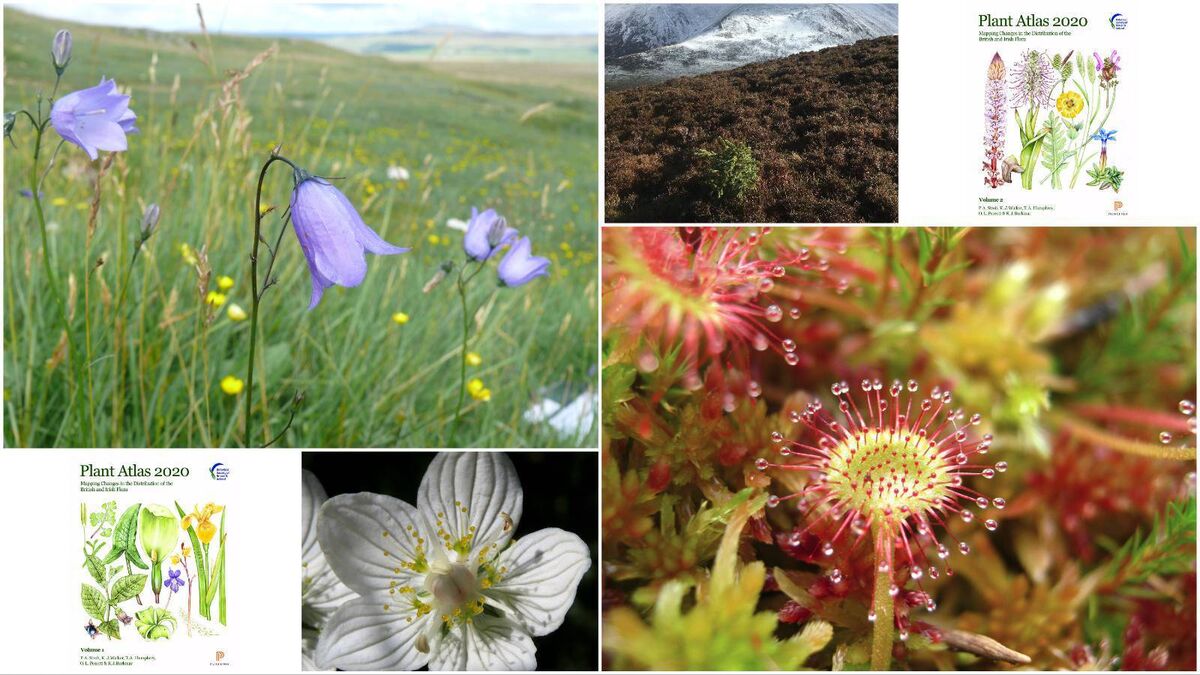
The result is that just over half (56%) of Ireland's native plant species are decreasing. This is one of the stark findings of ‘Plant Atlas 2020’ published last week by the Botanical Society of Britain and Ireland. The Plant Atlas collates 20 years of data from nearly three million plant records to give us a detailed distribution study of plants across Ireland. It documents how native grassland plants have declined the most in range and abundance since the last Atlas was published, 20 years ago. Many plants in lakes and wetlands have declined dramatically too, mostly as a result of drainage and nutrient enrichment. Habitat loss and degradation are identified as the main causes of biodiversity loss overall. Climate change has, as yet, had ‘only minor effects’ on plant life.
Now extrapolate these losses to what we know of how ecosystems work: communities of wild plants supporting every layer of life in an ecosystem; without them, little else survives. This is the basis of the collapse of biodiversity, from bumblebees that are starving and homeless to once common wild birds now hurtling toward extinction.
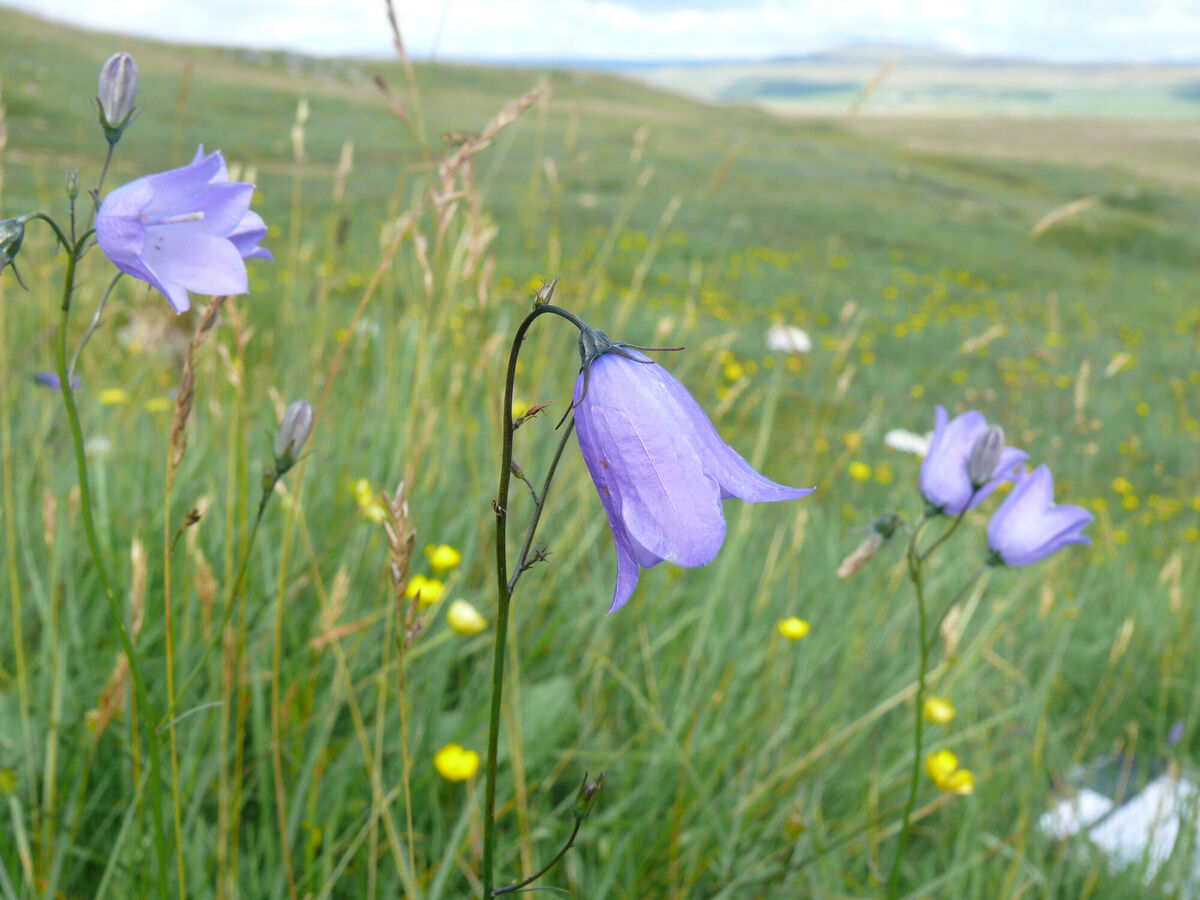
If we are to address the loss of wild plants identified in the plant atlas and replenish the ecosystems that make life possible, honesty and accurate accounting are the first essential steps. We are still not protecting key areas where species richness remains, nor prioritising the cultural and ecological richness of those land uses. Yet vast quantities of State funding are being channelled into subsidies for intensive agriculture and forestry plantations. We must prioritise the restoration of habitats that are in poor condition, such as re-wetting peat soils, managing species-rich semi-natural grasslands with care, and allowing native woodlands to regenerate and expand. Dramatic reductions in nitrate pollution are urgently needed too, giving the flora and fauna of lakes, wetlands, and grassland habitats a chance to recover. Accurate, unbiased, and easily accessible information is needed to inform policies and guide public spending.
We know what needs to be done, now we just need to do it.
